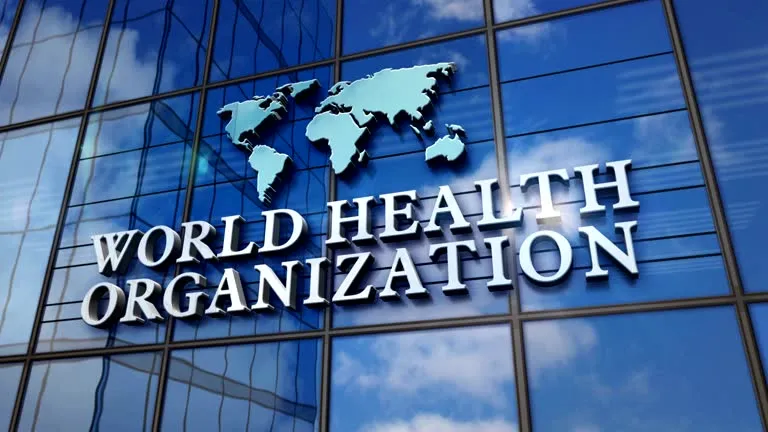
WHO Establishes Expert Surgical Sub-Group to Develop Global Guidelines for Caesarean Section Practices
Caesarean section, often referred to as C-section, has become the most common major abdominal surgery performed across the globe. What was once a surgical intervention reserved primarily for emergency situations to save the lives of mothers and newborns has, over the past several decades, become increasingly routine. According to global health data, the rate of births by caesarean section rose sharply from just 6% in 1990 to 21% in 2018. If this trend continues as projected, the figure could climb to 30% by 2030—marking a five-fold increase in just 40 years.
This dramatic shift reflects a combination of factors, including changes in clinical practice, maternal preferences, institutional protocols, and healthcare system dynamics. But it also raises critical questions about safety, equity, and the consistency of medical standards. In response to this evolving landscape, the World Health Organization (WHO) has taken a major step forward by announcing the formation of a specialized surgical sub-group that will contribute to the development of its first comprehensive, evidence-based guidelines on how caesarean sections should be conducted.
A Growing Global Trend with Complex Implications
Caesarean section is not a singular or simple procedure. It involves a complex sequence of steps encompassing preoperative assessments, intraoperative surgical techniques, and postoperative care. These components span medical, anaesthetic, and surgical domains, each of which must be carefully managed to ensure optimal outcomes for both mother and baby.
The stakes are high. While the procedure can be lifesaving when medically indicated, it is not without risks. Short-term complications may include infections, hemorrhage, and reactions to anesthesia. In the longer term, women may face increased risk of uterine rupture, placenta previa, or placenta accreta in future pregnancies—conditions that can pose severe health threats. Additionally, babies born via caesarean may face different health trajectories compared to those born vaginally, including altered immune system development and respiratory complications.
These risks are magnified in low- and middle-income countries (LMICs), where the availability and quality of comprehensive obstetric care can vary significantly. Of the estimated 38 million women expected to give birth via caesarean section in 2030, approximately 88% will reside in LMICs. In these settings, insufficient infrastructure, limited surgical expertise, and inconsistent post-operative follow-up care can compound the inherent risks of the procedure.
The Urgent Need for Standardized, Evidence-Based Guidelines
Despite the widespread use of caesarean sections, there remains no universally accepted, evidence-based consensus on the precise steps and best practices for performing the procedure. The surgical approach can differ markedly not only between countries but even among hospitals and individual surgeons within the same healthcare system. Variations may include the type of incision used, uterine closure techniques, infection prevention strategies, and post-surgical care.
These discrepancies underscore the urgent need for standardized guidelines that can be adapted and applied across diverse healthcare contexts. Standardization offers multiple benefits: it improves safety and outcomes for patients, streamlines training for clinicians, facilitates high-quality research, and ensures more efficient use of healthcare resources.
Recognizing this critical gap, the WHO’s Technical Advisory Group (TAG) for Maternal and Perinatal Health (MPH) prioritized the development of evidence-based recommendations for caesarean section practices during its meeting in May 2024.
Convening the Guideline Development Group: A Multidisciplinary Approach
In alignment with WHO’s rigorous standards for guideline development, a specialized Guideline Development Group (GDG) focusing on surgical interventions related to caesarean section has been convened. This GDG will play a pivotal role in reviewing the current body of evidence and determining the most effective and safest surgical approaches to include in the forthcoming WHO recommendations.
The inaugural meeting of the GDG surgical sub-group is scheduled to take place from 10 to 12 June 2025. During this three-day gathering, members will engage in a structured, evidence-based review of surgical practices associated with caesarean section procedures. Their mandate includes evaluating existing literature, identifying best practices, and developing recommendations that can be incorporated into WHO’s broader maternal and perinatal health guideline framework.
The process is designed to be both inclusive and transparent. The GDG includes a diverse array of experts with backgrounds in obstetrics, gynecology, surgery, anesthesiology, epidemiology, and global health. Members were selected based on their academic and clinical expertise, experience working in varied health system contexts, and demonstrated commitment to evidence-based maternal care.
Commitment to Transparency and Public Accountability
As part of its commitment to transparency, WHO has published brief biographies of the GDG surgical sub-group members on its official website. This move aligns with the policies set forth by the WHO Guidelines Review Committee and the Compliance, Risk Management and Ethics Office. The goal is to maintain the highest standards of integrity and minimize any potential conflicts of interest that could compromise the impartiality of the guideline development process.
Each GDG member has also submitted a Declaration of Interest (DOI) form, disclosing any financial, academic, or professional associations that could influence their judgment. These declarations have undergone thorough internal review, and WHO has taken steps to ensure that any potential conflicts are either mitigated or deemed not significant enough to affect the credibility of the process.
Importantly, WHO is also inviting the public to review the list of GDG members and provide feedback. Stakeholders are encouraged to report any concerns regarding potential conflicts of interest among the group’s participants. This open invitation for public scrutiny reflects WHO’s broader strategy of participatory governance and reinforces the organization’s commitment to accountability.
Toward Safer, Smarter Surgical Care for Mothers Worldwide
The development of standardized guidelines for caesarean section practices marks a crucial milestone in WHO’s ongoing efforts to improve maternal and newborn health outcomes globally. As the prevalence of caesarean births continues to rise, particularly in LMICs, the need for coherent, evidence-based, and contextually adaptable surgical protocols becomes increasingly urgent.
The outcomes of the June 2025 GDG meeting will inform the first-ever WHO recommendations focused specifically on surgical aspects of caesarean section. These guidelines will serve as a foundational reference for policymakers, healthcare providers, training institutions, and global health organizations seeking to optimize care for mothers and infants.
In a world where over one in four babies may soon be born through surgical delivery, ensuring that this procedure is conducted with the highest standards of care is not just a medical priority—it is a global health imperative.




